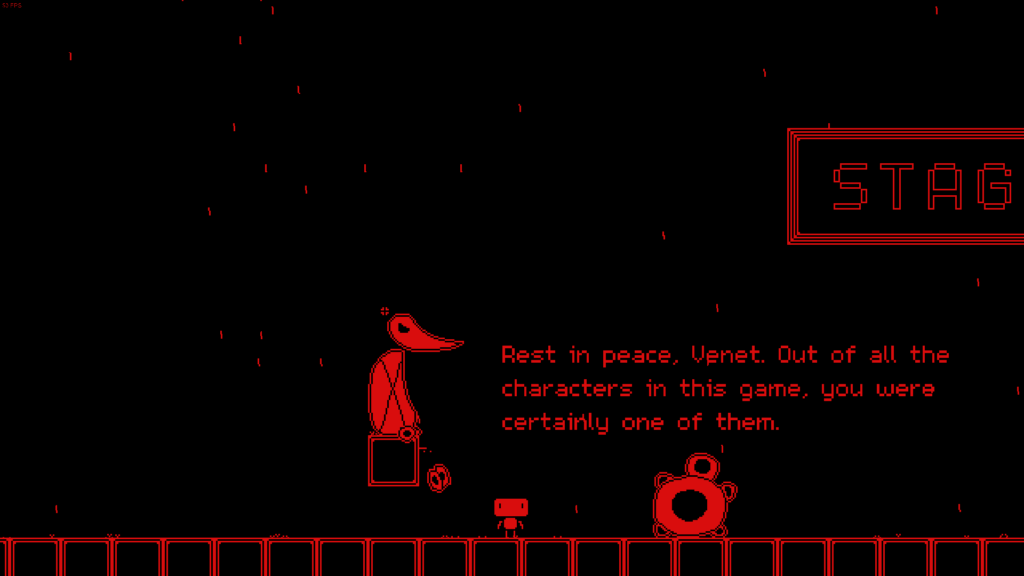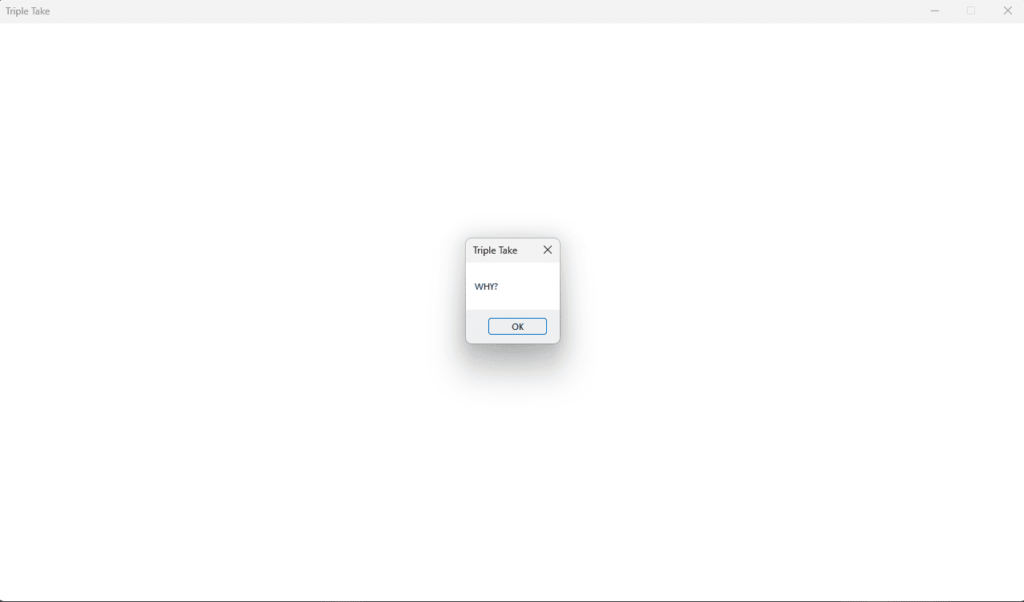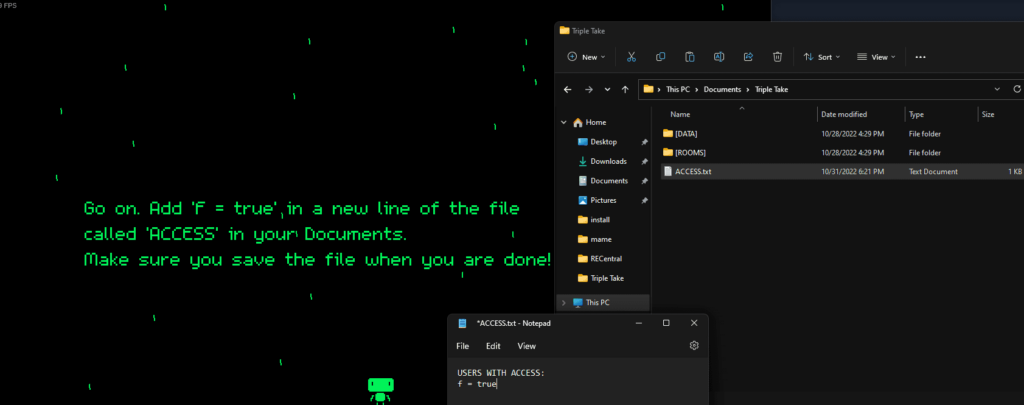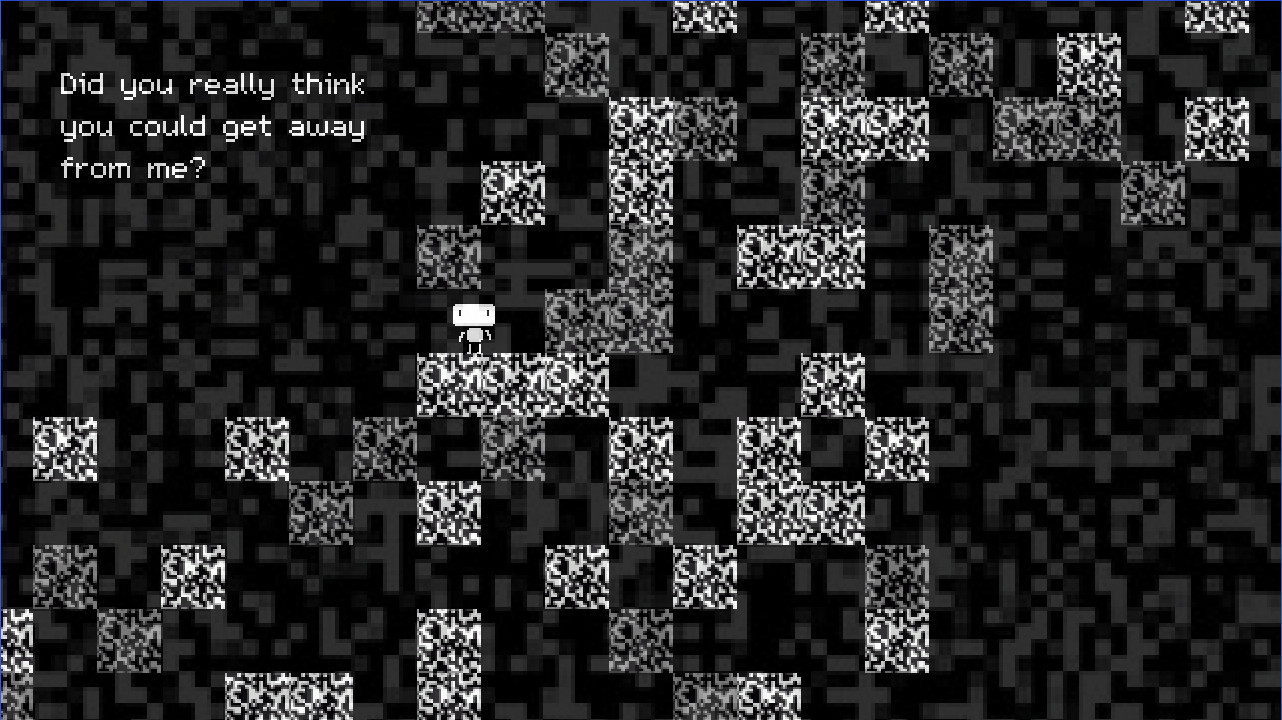
It’s not often that I find a game that catches me off guard, but the few times I do, they’re usually pretty memorable. Triple Take is exactly this type of game, as it’s more than what it appears to be on the surface, and there’s a lot of charm hidden in this game with a tiny price tag.
Triple Take
Developer: FlyAway
Publisher: Bonus Stage Publishing
Platforms: Windows (Steam)
Release Date: October 6, 2022
Players: 1
Price: $6.99 USD

Triple Take seems innocently all too familiar at the initial glance. It’s a monochromatic platformer, visually similar to games like VVVVVV, but with high precision platforming difficulty like Celeste or Super Meat Boy.
The gimmick for Triple Take is that you will complete each level three times, and on each subsequent take, the level will change up ever so slightly in order to challenge you with new ways to accomplish the same end goal.
Levels will have traps such as bullet cannons or flame throwers blocked off on the first take, but by take three the block in front of them will dissolve and you’ll have to overcome a new obstacle.
This makes the gameplay fairly interesting because even though it’s a whole bunch of the same thing over and over, there can sometimes be a drastic difference between the varying difficulties of each individual take.

Completing levels in Triple Take will progress you along, while collecting the hidden scroll in each level will allow you to learn more about the game’s story and ultimately guide you toward the finale.
Truth be told, while I did manage to collect all of the scrolls throughout each of the levels of Triple Take‘s five worlds, I’m still not certain that it mattered.
It’s not clear if collecting them actually did anything aside from one character asking you to collect them. Still, they were easy enough to collect and I had only missed like two or three throughout the entirety of my playthrough.

What makes Triple Take a unique experience is that the platforming is pretty solid, but what caught me off guard was the real-time manipulation used by the game in order to continue your progress.
Triple Take breaks the fourth wall by borrowing tricks from other games. Like Doki Doki Literature Club, it can force the player to interact with the game outside of the game in order to finish it.
You see, Triple Take is a platformer on the surface, but it’s actually a bit of a horror game that’s really about stopping a sentient AI from replicating itself and causing the destruction of all humanity.

Triple Take‘s mysterious protagonist (but maybe antagonist depending on how you look at it) appears to you in forms both in and out of the game, it’s ingenious.
This duality will likely have you scratching your head, laughing, and for those who aren’t too familiar with basic computer knowledge, being slightly frustrated at doing what the game wants you to do.
Along the way you’ll meet a small but loveable cast of characters that don’t really serve much of a purpose other than some slight comic relief, but Flux is my dude.

At the end of the day, Triple Take is a charming yet somewhat spooky platformer that’s pretty good for what it is, it encourages you to think outside the box (literally), and definitely easy on the wallet.
Seriously, this game is $7. I’ve spent more on bad coffee that I took three sips of and threw away for what this game will cost you, and I got a solid 10 hours of enjoyment from my time with Triple Take.
Triple Take was reviewed on PC using a copy provided by Bonus Stage Publishing. You can find additional information about Niche Gamer’s review/ethics policy here. Triple Take has been available for Windows PC (via Steam).